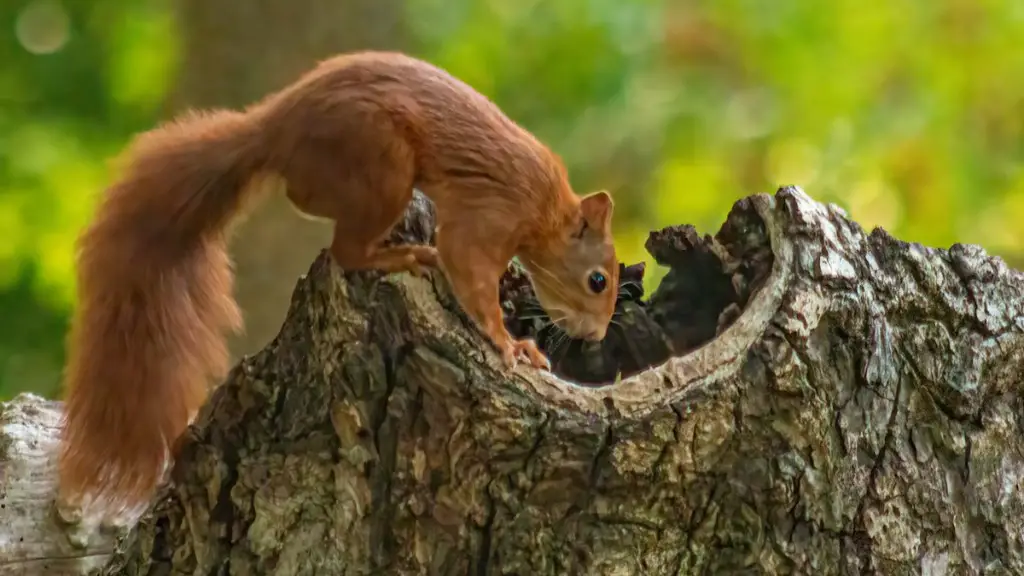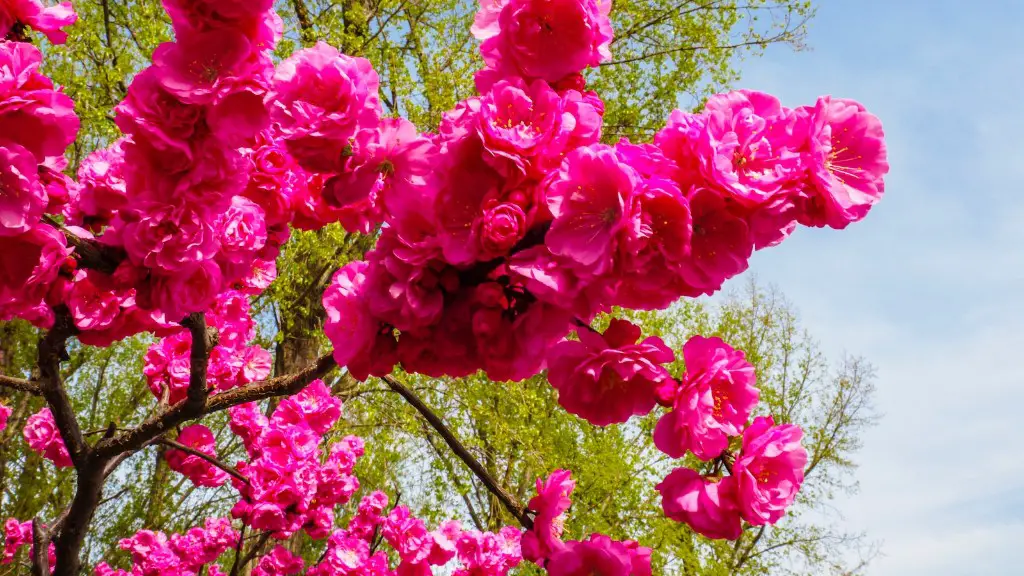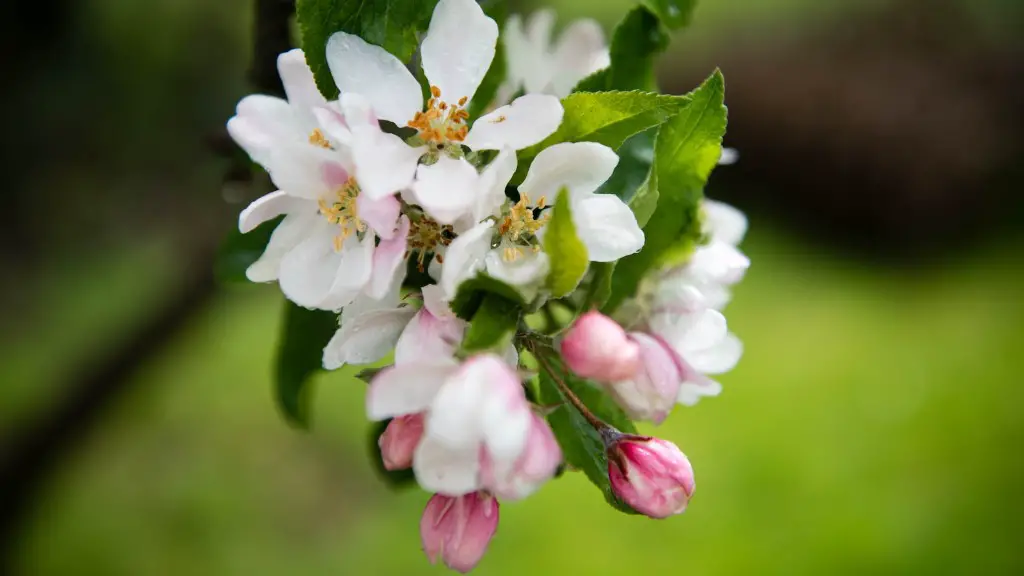What Does a Cherry Tree Bark Look Like?
A cherry tree is an ornamental plant known for its fragrant blooms and sweet-tasting fruit. This tree is native to the temperate regions of Northern Hemisphere, including Central Asia, North America, and Europe. Cherry trees feature white and pink blossoms, dark green leaves, and a distinctive bark. It is this bark that helps most to distinguish cherry trees from other species.
Cherry tree bark has a pattern of longitudinal ridges and furrows. It has a smooth to slightly scaly surface that can be a range of colors, including shades of yellow, red-brown, orange, and grey-brown. As the tree matures, the bark becomes less colorful and darker, often resembling charcoal. However, it maintains its scaly, ridged profile.
The bark of a cherry tree also has a unique texture. It is relatively strong, yet allows for some flexibility when the tree grows. This trait is useful as it allows the tree to withstand wind and other harsh weather conditions, while still allowing its trunk to expand and contract when necessary to support larger branches.
Cherry tree bark can provide some clues on the health of the tree. For example, if the bark appears to be excessively dry and cracking, it may signify that the tree is suffering from lack of available moisture. In this situation, additional watering of the soil around the tree is recommended to help alleviate the issue.
The distinctive bark of a cherry tree is an important part of its overall character. Its scaly ridges and flexible texture add interest and texture to many landscapes. In addition, the colors of the bark can add to the colorful foliage of the tree in different seasons. Therefore, cherry tree bark can be a pleasing feature in any landscape.
Cherry Tree Bark Compared to Other Trees
Cherry tree bark can be distinguished from other trees by its characteristic scaly ridges and colors. For example, the bark of an oak tree is quite different from that of a cherry tree. Oak trees have bark that is deeply grooved with numerous ridges and furrows. The colors of the oak bark tend to be mostly grey-brown, with some patches of reddish-brown. In contrast, cherry trees produce bark that is smoother, with bright colors such as red-brown and yellow.
Cherry tree bark is also quite different from that of pine trees. Pine tree bark usually has small scales that often create large net-like patterns over the surface of the bark. The colors of the bark are usually much lighter as well, often with a vivid shade of green. On the other hand, cherry tree bark is more likely to appear in shades of yellow, red-brown, and grey-brown.
Finally, the bark of a cherry tree can be distinguished from that of an apple tree. Apple tree bark is generally smooth and may appear slightly wrinkled and shiny in areas. The colors of an apple tree bark tend to be much lighter and may range from white to grey or light brown, depending on the species.
Overall, cherry tree bark is a distinct feature of this species. Its scaly ridges, colors, and texture make it distinct from other species and add to the beauty of a cherry tree.
Caring for Cherry Trees
Cherry trees require the right conditions to grow and thrive. An important aspect of caring for a cherry tree is ensuring that the bark is properly maintained. This involves providing adequate moisture and pruning branches properly so as not to damage the tree.
It is important to provide adequate moisture to the cherry tree. If the soil around the tree is too dry, the bark can become dry and brittle, making it more prone to cracking or splitting. Regular watering of the soil can help keep the bark healthy.
It is also important to ensure that the branches are pruned properly. Pruning should be done in a way that does not leave jagged cuts or damage the bark. Weed whacking or shearing can lead to serious injury to the tree and should be done by a professional.
In addition to proper pruning and watering, cherry tree bark should also be inspected regularly. If the bark appears to be dry, cracking, or splitting, additional watering may be needed. Regular inspection can help ensure the tree is healthy and can help prevent potential damage.
How to Use Cherry Tree Bark for Crafts?
The bark of a cherry tree can be used for various crafts. With some creativity, it can be transformed into unique pieces of art or useful items. For example, the bark can be used to create rustic picture frames, wine bottle holders, wood-carved sculptures, and decorative vases.
In addition, cherry tree bark can be used to make jewelry and accent pieces. It can be used to make unique and stylish necklaces, earrings, and bracelets. The bark can also be used to make keychains, pins, and other decorative pieces.
The bark of a cherry tree can also be used to make natural dyes. It can be used to dye clothing, fabrics, papers, and other items. The dye will likely have hues of red and brown, depending on the variety of the cherry tree.
Finally, cherry tree bark can be used in traditional medicine. The bark has been used to treat digestive problems, heart issues, and other ailments. Many herbal remedies contain components of the bark, and it is often used as an ingredient in home remedies.
What are the Benefits of Cherry Tree Bark?
In addition to providing a unique and interesting look to landscapes, cherry tree bark has other benefits as well. The bark of this tree is known for its strength and flexibility, which allow the tree to grow and support its branches while remaining resilient to wind and other adverse weather conditions.
This bark is also known for its ability to retain moisture. This increases the overall water retention capacity of the soil, which can help to prevent dehydration in the tree and its roots system. In addition, cherry tree bark is known for its ability to release essential vitamins, minerals, and nutrients to the soil. This can help to provide nutrition to neighboring plants.
Finally, cherry tree bark can be used for various crafts and purposes. It is useful for making unique items such as rustic picture frames, natural dyes, and traditional medicine ingredients. Therefore, the bark of this tree is a valuable resource that can provide benefits both to the ecology of a landscape and to its inhabitants.
What are the Uses of Cherry Tree Bark?
Cherry tree bark is a valuable resource that has a variety of uses. It is primarily used to provide an aesthetic appeal to landscapes due to its distinctive characteristics and colors. The colors of the bark can add to the foliage of the tree in different seasons.
In addition, cherry tree bark is also valued for its strength and flexibility. The bark allows the tree to grow and support larger branches while withstanding the harsh weather conditions. It can also help to retain and release moisture and nutrients to the soil, which can be beneficial to the health of the ecoysystem.
Moreover, cherry tree bark is useful for crafting. It can be transformed into unique items such as wood-carved sculptures, jewelry, and accent pieces. The bark can also be used to make natural dyes, and even ingredients for various traditional remedies.
Overall, cherry tree bark is a valuable natural resource. It can provide aesthetic appeal, strength, and various uses. Therefore, it is an important feature of a cherry tree that should be taken into consideration when planting and caring for this species.
What Factors Affect the Appearance of Cherry Tree Bark?
The appearance of cherry tree bark can be affected by different factors. Age is one of the primary factors to consider. As the tree ages, the bark usually becomes darker and less colorful. This can help to distinguish a mature cherry tree from younger trees.
Environmental conditions can also affect the appearance of the bark. For example, inadequate water can cause the bark to become dry and brittle, making it more prone to cracking or splitting. On the other hand, too much water can lead to molds or fungi growth, leading to discoloration of the bark.
Injury to the tree can also affect the appearance of its bark. Jagged cuts and damage to the bark can put the tree at risk of infection and diseases. Therefore, it is important to ensure that the tree is properly pruned and cared for.
Finally, care and maintenance are important factors that affect the appearance of cherry tree bark. Proper watering, pruning, and inspection can help keep the bark healthy and ensure that the tree is growing and thriving.
Do Cherry Trees Have Other Unique Characteristics?
In addition to its distinctive bark, cherry tree has other unique characteristics as well. The leaves of a cherry tree are a dark green color with pointed tips. The tree also has white and pink blossoms that are fragrant and appear in late spring.
Cherry trees also produce sweet-tasting fruit for those lucky enough to have them in their yard. The results of the tree can be eaten fresh from the tree or made into jams, pies, cakes, and other desserts. The fruit may not appear every year, however, as a cherry tree typically only produces fruit every other year.
Moreover, cherry tree wood is highly prized for its beauty and strength. It is dense and durable and is used to craft furniture, decorations, and other items. It can also be used for fuel and turned into charcoal.
Overall, cherry tree has many interesting and unique characteristics that make it a worthwhile addition to any landscape. Its bark, leaves, flowers, and fruit are distinctive and can add beauty to the outdoors. Its wood is also highly valued and provides many potential uses.



